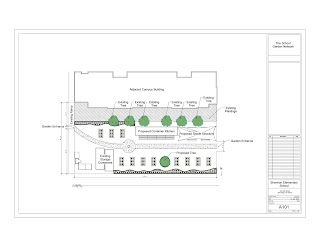by Martin Lopez, ASID Eco Committee Member
Unique Carpets Ltd., ASID Industry Partner
The business reality of “the green movement” is rapidly becoming a campaign of too much information. True natural materials require little explanation. The common sense of fibers that require little processing should make practical sense to any designer or consumer. With volumes of green opinions being published monthly and new environmentally “official” certification organizations appearing out of nowhere, it is no wonder that the green forest can’t be seen for trees. Chemical companies are influencing government agencies, which results in their environmental conscience being little more than a misconstrued apology for expensive processing of polluting materials.
If you start with truly green ingredients, then you don’t have to worry about reclaiming anything. There are those who want you to believe that by reclaiming environmentally offensive materials, shipping them to a plant (by trucks that use gasoline) to factories that use energy to break them down, and then adding more chemicals to reprocess them into a less offensive version, that they can now claim them as “eco-friendly”.
Now that you’ve thought about this for a moment, let’s move onto the image of a serene pasture where sheep graze on grass, which is the only fuel used to produce one of the planet’s oldest natural fibers – wool.
For thousands of years, wool has been the fiber of choice in carpet and rug manufacturing. Aside from its heralded performance and unsurpassed aesthetics, 100% pure wool is an environmentally-sound selection in that it is completely biodegradable and, since the earth’s natural resources are not depleted in its production, it is a rapidly renewable resource. Further, wool is referred to as a ‘bio-based’ fiber since its production is fueled by another rapidly renewable resource – grass. Wool offers a “closed loop” recyclable option in design textiles.
Did you know that wool is an ideal selection for allergy-prone individuals? Wool allergies are virtually non-existent and, when used as carpeting, wool acts as a natural air purifier by actually attracting air-borne dust particles and common pollutants where they can be harmlessly vacuumed away. Tests show wool’s natural air purification process can last upwards of fifteen years. Wool does not promote the growth of dust mites or bacteria and is inherently fire safe through its natural flame-retardant qualities. Synthetic fibers have a melting point where they become fuel for a fire. Wool is a “Class 1” rated fiber, meaning that while it will produce smoke it will not become fuel for a fire. This is one reason why it is the fiber of choice for public areas.
Wool also acts as a natural air conditioner, absorbing moisture during periods of high humidity and releasing it when the air is dry. It is also easy to maintain. Spills and soil are easily removed, making wool a fiber of choice for projects like casinos and hotels for its serviceability. The density of wool fiber also gives it superior insulating properties over synthetic fibers. The double bonus comes when the high cost of heating and cooling a home is offset by the insulating attributes of a soft, bare foot-friendly layer of wool carpeting.
Finally, wool requires from one-third to one-sixth the energy to produce than comparable synthetic fibers. Wool has natural crimp and the scaled pattern of the fiber makes it easy to spin. Fabrics made from wool have greater bulk than other textiles, and provide better resilience, elasticity, and durability. ALL synthetic fibers have been developed with obsolescence in mind; this means they are designed to wear out, leaving your client no choice but to replace them.
Clients use designers to make wise decisions on their behalf that add value to their interiors. Wool carpets as a design element offer a cost-effective, long term solution to this challenge. As the cost of oil rises, so does the cost of the production and manufacturing of synthetic fibers.
Do yourself, your client, and the Earth a favor and specify wool carpets and rugs. This one small step speaks volumes to your true commitment to eco-friendly design.

















